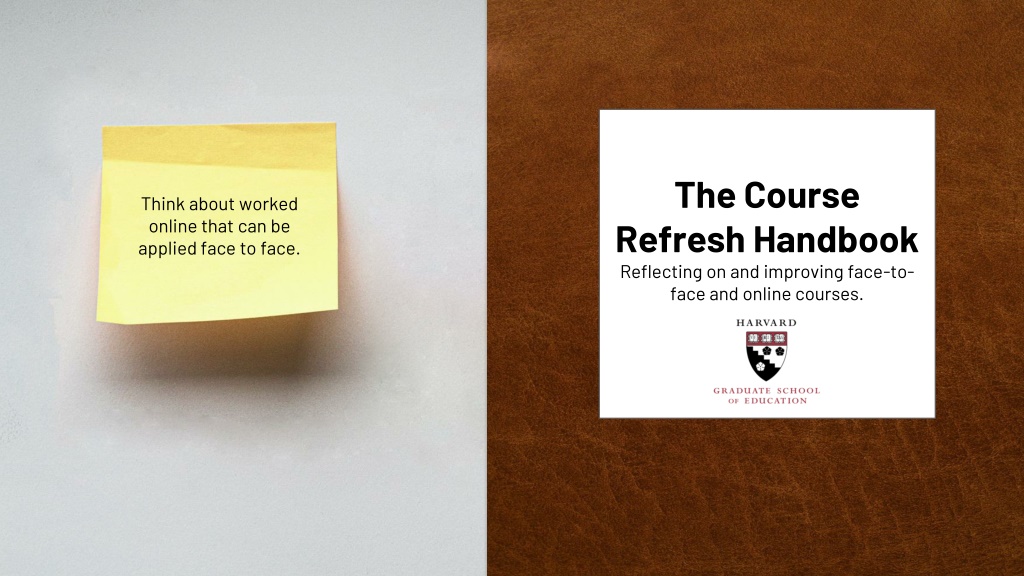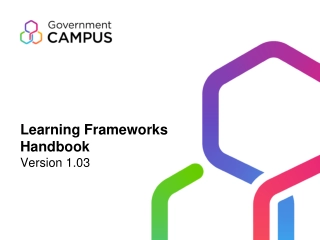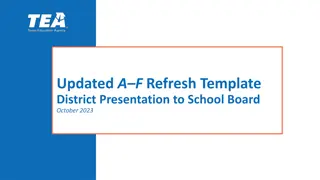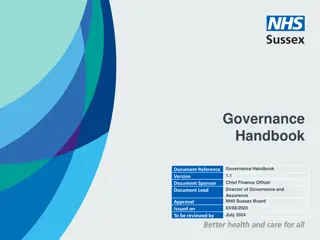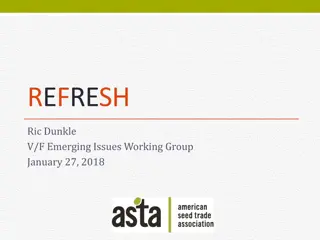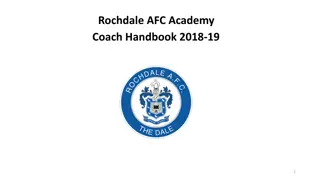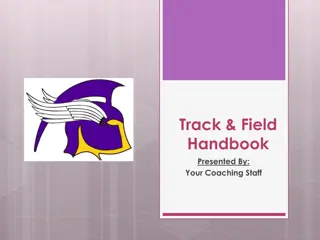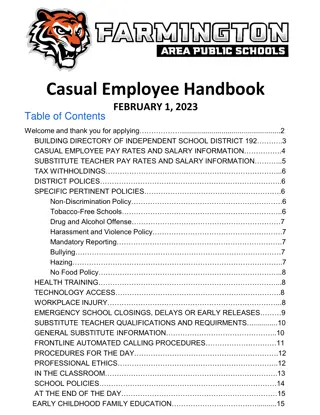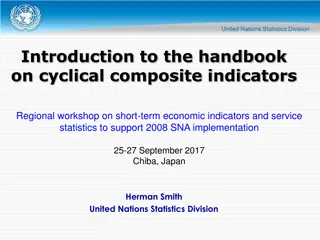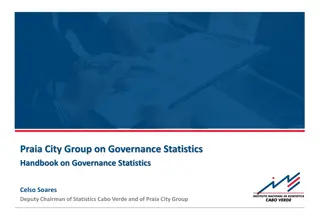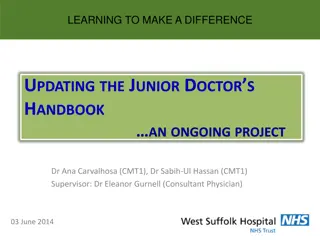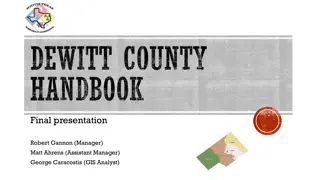Reflect and Improve: The Course Refresh Handbook
Explore strategies for refreshing courses based on online teaching experiences to enhance face-to-face and online learning. This handbook helps educators identify impactful changes for student learning and overall course experience, emphasizing data-driven approaches and reflective practices.
Download Presentation

Please find below an Image/Link to download the presentation.
The content on the website is provided AS IS for your information and personal use only. It may not be sold, licensed, or shared on other websites without obtaining consent from the author.If you encounter any issues during the download, it is possible that the publisher has removed the file from their server.
You are allowed to download the files provided on this website for personal or commercial use, subject to the condition that they are used lawfully. All files are the property of their respective owners.
The content on the website is provided AS IS for your information and personal use only. It may not be sold, licensed, or shared on other websites without obtaining consent from the author.
E N D
Presentation Transcript
The Course Refresh Handbook Reflecting on and improving face-to- face and online courses. Think about worked online that can be applied face to face.
Refreshing Your Course Learning from this year s teaching experiences can provide valuable insights for refreshing and improving future versions of your courses. Whether you ll be continuing to teach online or transitioning back to on-campus teaching (or both), this handbook contains strategies for making the most of the course refresh process by identifying and prioritizing changes that will have the greatest impact on your students learning. It is a workbook to jot down your thoughts, and journal as you go. Please note you must not have the slide show in presenter mode if you would like to digitally add to the document. Otherwise you are free to print it and write by hand.
Begin Now, with a Light Touch Think about the following... Where will you store the data? Refreshing a course involves a lighter touch than developing it. Focus on using student feedback and other data to zero in on changes that will most affect your students learning and overall experience. What will require some major shifts? As you finish up this semester, start to pull together into one place any materials you have that will help you reflect and plan. How can you incorporate smaller tweaks? Type here
Reflect on Previous Semesters Are your learning objectives still relevant? If not, how will you update them? Take time to think about how your course went for you, the teaching team, and your students. What has worked well in this years courses? What are your assessments and how are they linked to your learning objectives? What didn't seem to work well in this year s courses? How can you tell if the results of the assessments are meeting the objectives?
Where have students been confused about activities or communications? What needs to be clarified or streamlined? How have you supported students in meeting the learning objectives, and how can you strengthen this connection? How has student feedback been provided and does the way it is delivered seem to help students learn? What have students been confused about? (Where has the teaching team needed to step in and re- teach, or provide extra support materials?) How can you improve on feedback?
What resources and support might you need? (Allow for enough time to secure support and resources from the TLL, IT, your teaching team, etc.) When might you be able to set aside time to work on your course refresh?
Gather and Analyze Data Identify recurring themes in the feedback related to potential revisions. Look for the following themes and use the identified resources for support: Collect as much data as you can and review it to identify themes. It's common to see concerns related to course content, workload and pace, communication, assessment and feedback, and organization. Gather student feedback for your course, including formal feedback provided through surveys or evaluations, as well as informal feedback such as comments from students during class, in synchronous online sessions, or via email. Theme Resources Course content Design: Preparation for Modules Workload and pace Make: Create Your Course Map Communication Teach: Designing for Social Presence Teach: Designing for Teaching Presence What informal feedback have you gotten? Assessment Types of assessment Creating a balanced assessment strategy Organization Design: Learning Sequence
Review trends in performance on student assignments and activities and jot down your findings. For Canvas users: review your course content, structure, and organization and identify any updates needed below. Collect any notes the teaching team took during the course. It may also be helpful to hold a teaching team debrief. Do you have any clarification questions on the team notes?
Connect Onsite and Online What did you learn about communicating with your students online that could help support your oncampus teaching? Consider how your experience online might inform and improve your on-campus teaching. What technologies would make sense to bring into the on-campus classroom, and why? What assessments and activities used online might work well on campus?
List the non-critical revisions that you won't have time to accomplish right now. Prioritize and Plan Make some tough decisions about what to prioritize in your course refresh. Identify high priority items--those that could (or did) most significantly impact student learning or the student experience. Organize your items by size see below for examples: o Large tasks: making new videos or animations, revising the overall course structure, or overhauling multiple large assignments oMedium tasks: revising one or two assignments, revamping your feedback process or reorganizing items within the course o Small tasks:tweaking assignment instructions, moving a lecture to a different part of the course, or adding a student survey.
Medium tasks: Review your course content, media, and communications in Canvas and list the changes needed. Choose a set of items you can reasonably address before your course starts. Assemble a mix of small, medium, and large tasks. Large tasks: Small tasks:
Get the support you need List any ideas for assistance in media production support for asynchronous video and other materials. What individual consultations would you like to have with the Teaching and Learning Lab? The lab can help point you in the right direction towards socio-human- technical capital and resources. List any ideas for assistance in re-organizing your Canvas site if applicable. List any consultation or support topics on course redesign in general.
List any consultation or support topics creating assessments. Do any of your learning objectives need to change? Which ones? List any consultation or support topics on course development.
Suggested Timeline *For large, resource-intensive tasks, the TLL will need significant advance notice in order to plan accordingly. To request TLL support, contact Bill Wisser at william_wisser@gse.harvard.edu. This is an optional timeline based on what needs to be accomplished by when. Think about when you will need support and create your own plan. Beta test course, ask for help if needed.* Secure resources and make revisions. Gather data to inform your decisions. Gather data to inform your decisions. Prioritize revisions. Create a plan and identify resources. 00/00/00 00/00/00 00/00/00 00/00/00 00/00/00 00/00/00
